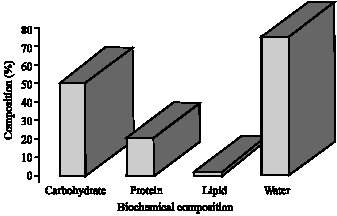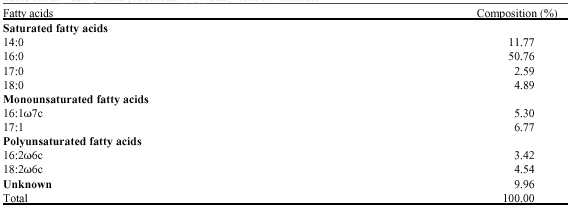Research Article
Biochemical Composition and Fatty Acid Profile of the Green Alga Ulva reticulata
Center of Advanced Study in Marine Biology, Annamalai University, Parangipettai-608 502, India
Chendur Palpandi
Center of Advanced Study in Marine Biology, Annamalai University, Parangipettai-608 502, India










